Abandoned Cities in the Steppe
Roles and Perception of Early Modern Religious and Military Centres in Nomadic Mongolia
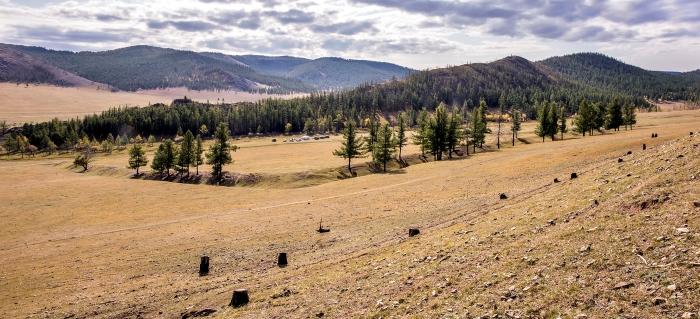
Fig. 1. Walled enclosure WA-1 seen from NW, with excavation camp in the background, 2019 (photo: Sara Jagiolla, CAU Kiel).
Projektteam (FU):
Prof. Dr. Henny Piezonka, Institut für Prähistorische Archäologie
Hans Whitefield, Field & Finds Lab, Institut für Prähistorische Archäologie
Cooperation partners:
Prof. Dr. rer. nat. Martin Oczipka, Fakultät Geoinformation, Hochschule für Technik und Wirtschaft Dresden
Prof. Dr. Chuluun Sampildonov, Mongolian Academy of Sciences, Ulaanbaatar, Mongolia
Dr. Christina Franken, German Archaeological Institute, Bonn
Dr. Birte Ahrens, Deutsche Sporthochschule Köln
Cluster of Excellence ROOTS, Subclusters Urban ROOTS & Dietary ROOTS, Kiel University
Stipend holders:
Enkhtuul Chadraabal (PhD stipend), Dr. Jonathan Ethier (postdoc stipend), Dr. Christian Ressel (postdoc stipend)
Project duration (funded): 2019-2024
Funding: Gerda Henkel Foundation, Lost Cities programme (grant no. AZ 01/LC/19)

Fig. 2: Map of study region in Central Mongolia, highlighting the investigated complexes GA-9, GA-10, WA-1, further pit structures (“Grubenanlagen”), and Baruun Khüree monastery (map base: Google Earth).
Project Description:
Background
The migration of people from the countryside to urban centres as well as the abandonment or violent destruction of settlements and cities have shaped world history for thousands of years. Special forms of urban centres with specific histories, roles and socio-cultural significance have developed in predominantly nomadic societies. Such urban sites, now abandoned or destroyed, can also be found in Mongolia, where many people continue to live as mobile pastoral nomads today. As former centres of sedentary life, these lost cities can make an important contribution to the country’s cultural identity. In Mongolia, a mobile way of life is just as much an essential part of the cultural identity as the reference to the rise of the Mongol World Empire under Genghis Khan and his successors in the 13th and 14th century. By contrast, much less is known about the subsequent period of the Qing dynasty (1636–1911), when Mongolia was controlled by Manchurian occupiers.
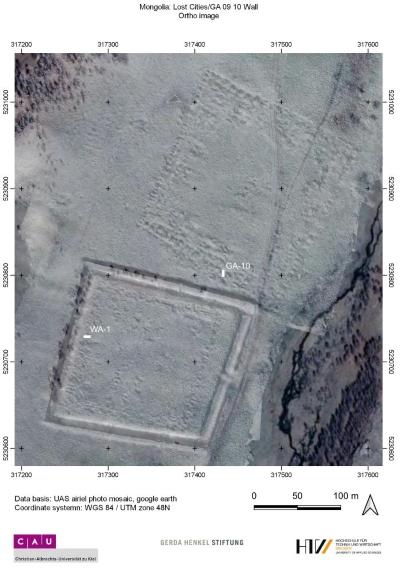
Fig. 3. Combined DSM and ortho image of walled enclosure WA-1 and “Grubenanlage” GA-10 with the two trenches excavated in 2019 marked in white (graphics and model: Martin Oczipka, HTW Dresden).
Aims and approach of the project
In summer 2019, a new research project funded within the Gerda Henkel Foundation’s “Lost Cities” programme started its fruitful collaboration between German (Kiel University, HTW Dresden) and Mongolian (Academy of Sciences) research institutions to investigate “Abandoned Cities in the Steppe – Roles and Perception of Early Modern Religious and Military Centres in Nomadic Mongolia”. Focusing on abandoned sedentary settlements and urban nodes of the Early Modern period, the project set out to explore particular, yet poorly understood (de-)urbanization processes in the Inner Asian nomadic heartland.
The project is devoted to the study of the lost cities of this influential period of Mongolian history to solve the conundrum behind the sociocultural, economic and political dynamism associated with these urban centres. It takes a comparative approach, contrasting Buddhist monastic settlements with military settlements during the Qing Dynasty (1616-1911). The aim is to identify facets of urban life in Early Modern Mongolia and to examine how they have been shaping cultural memory over several generations up until today. Our Mongolian-German team developed an innovative approach to trace the entanglement of the former significance, historical perception and current importance and re-interpretation of abandoned Manchu period urban sites. The work programme included three fieldwork seasons in 2019, 2020 and 2022, combining ethnographic and historical research, archaeological excavation and survey, and remote sensing methods in order to explore how the abandoned urban sites in their material state and their history and former significance is still reflected in the consciousness and perception of the local people. Taking a specific look at continuing dynamics of urban agency and perception after site abandonment, we asked whether the economic, religious and social networks in which the investigated sites were incorporated have left traces in later mental concepts as well as practical connotations of the natural, ritual, and socio-political landscape, and in the self-perception and identity of their inhabitants.
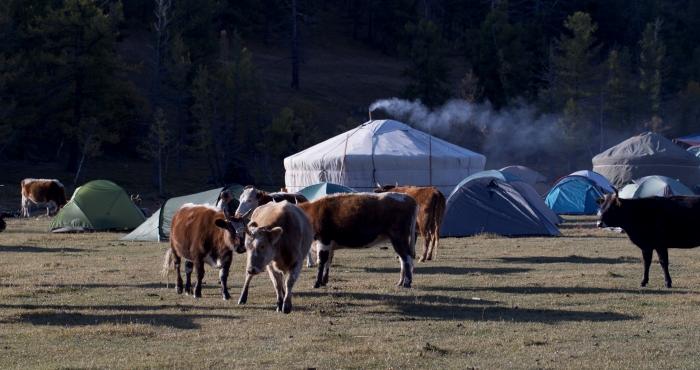
Fig. 4. The excavation camp of 2019 near WA-1 and GA-9-10 had frequent visitors (photo: Sara Jagiolla, CAU Kiel).
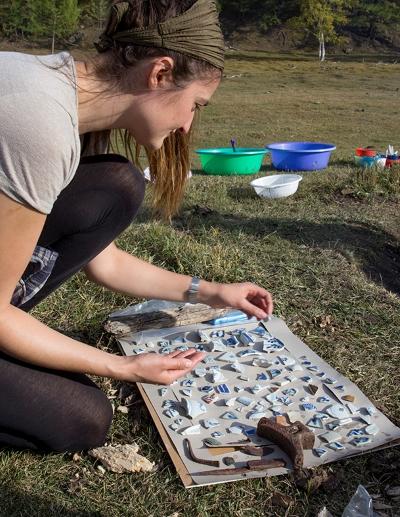
Fig. 5. Volunteer student Tanja Schreiber washing finds from the surface collection, 2019 (photo: Sara Jagiolla, CAU Kiel).
The “Grubenanlagen” – A New Type of Manchu Period Military Sites in the Khangai Mountains
Despite the obstacles posed by the Covid-19 pandemics which were able to be circumvented through the generous flexibility of the Gerda Henkel Foundation, our project led to substantial new insights on Early Modern urbanism in Mongolia and its afterlife and impact up until today. For the first time we reliably dated the enigmatic pit structures (“Grubenanlagen”) in the Khangai mountains to the Manchu period and confirmed their military function. We are now able to prove their relation to the Qing period. Evidence of enduring house constructions with earth-timber-walls question earlier interpretations of the “Grubenanlagen” as short-term, seasonal marching camps with tents. These assumptions were based on contemporary pictorial sources of 17th/18th century Manchurian camps showing light tents of the troops. Through our new findings, at least some of the “Grubenanlagen” sites must now be regarded as more permanent stations, such as longer-term garrisons. A future task based on these new results is the comprehensive mapping (preferably AI-aided) of further sites to better understand the history and spatial organisation of military campaigns along the northern border of the Qing Dynasty empire.
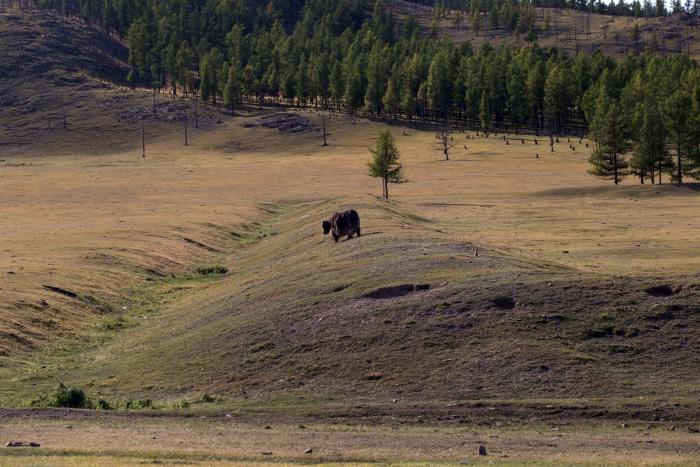
Fig. 6. A yak exploring the bank of walled enclosure WA-1, summer 2019 (photo: Sara Jagiolla, CAU Kiel).
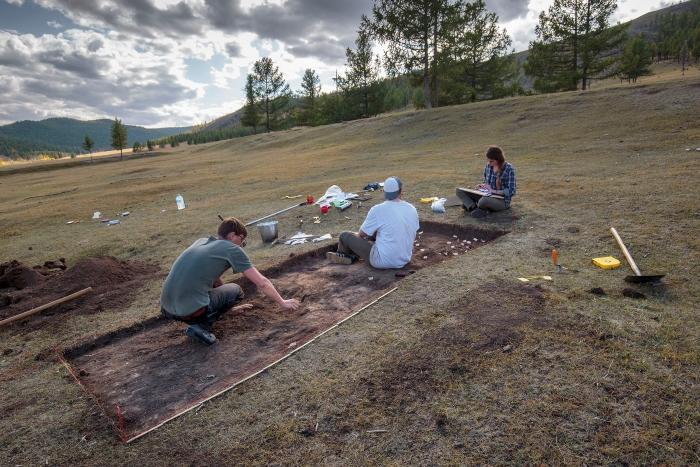
Fig. 7. Walled enclosure WA-1, test trench with bone concentration visible in the western part, 2019 (photo: Sara Jagiolla, CAU Kiel).
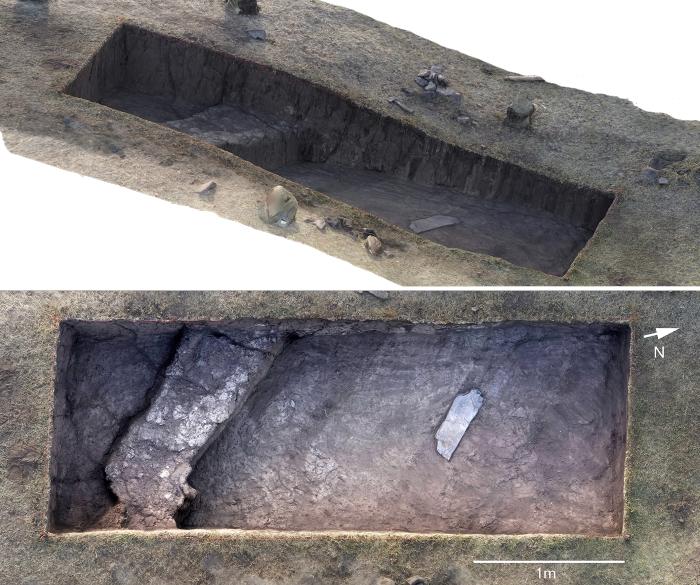
Fig. 8. Pit structure GA-10, trench. DSM with photo information showing wall and bands of discoloration on building floor (graphics: Martin Oczipka, HTW Dresden & Sara Jagiolla, CAU Kiel).
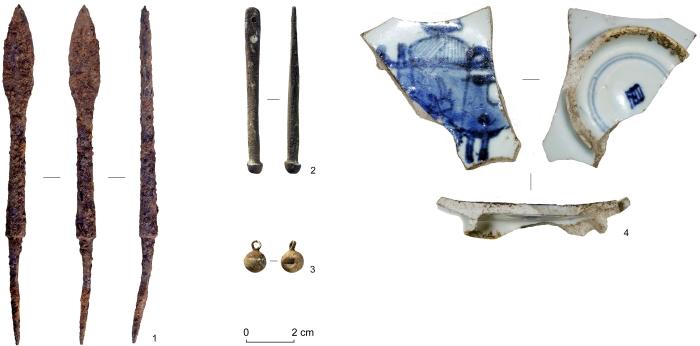
Fig. 9. Pit structure GA-10, trench, 2019. Selection of metal finds. 1 – projectile head, iron; 2 – pendant of unknown function, bronze; 3 – deel button, bronze or brass; 4 – base sherd of blue-and-white porcelain bowl from horizon 1 (photos: Sara Jagiolla, CAU Kiel).
Baruun Khüree Monastery – A Long-Standing Settlement Hub and Interaction Node
Baruun Khüree as a monastic site is the second pillar in the research programme of this project, as monastic sites and their function represent a major research gap in understanding the socio-economic organisation of urbanisation trajectories within nomadic Mongolia in the Qing period. Our research including multi-method survey and test-trenching at one of the four huge rubbish middens surrounding the monastic compound led to a better and detailed understanding of the spatial layout, architectural diversity and economic basis of this important early monastery and its development until its destruction in the 1930s. The excavated finds bear witness to the integration of the site into extensive trade networks from China to Russia. Our ethnographic and historical findings provide new information on the perception, interpretation and current roles as lieux de memoire of the abandoned urban places among the local nomadic population, indicating stark differences in the significance of the ruined remains of monastic versus military sites.
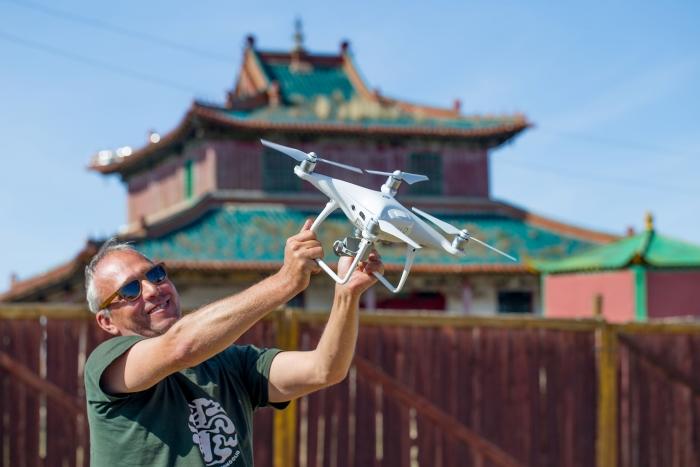
Fig. 10. PI Martin Oczipka with the DJI Phantom 4 Pro during the remote sensing mission at the modern site of Baruun Khüree monastery, September 2019 (photo: Sara Jagiolla, CAU Kiel).
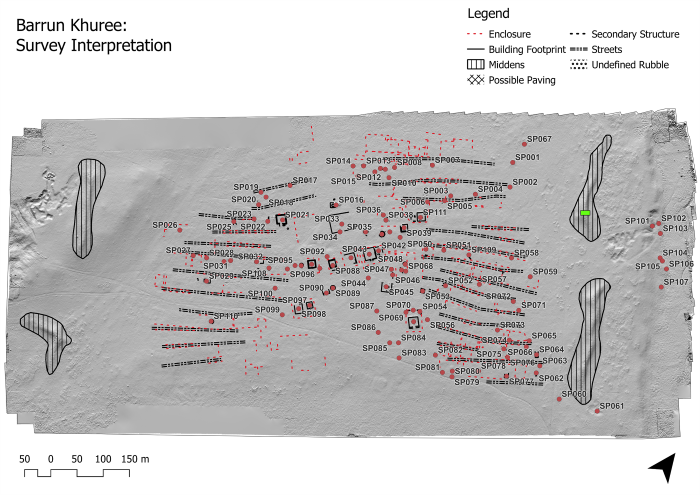
Fig. 11. Baruun Khüree monastery: Interpretation of combined information from digital surface model and terrestrial survey, indicating architectural features (numbers) and location of the excavation trench of 2022 (green rectangle, not to scale) (illustration: Hans Whitefield).
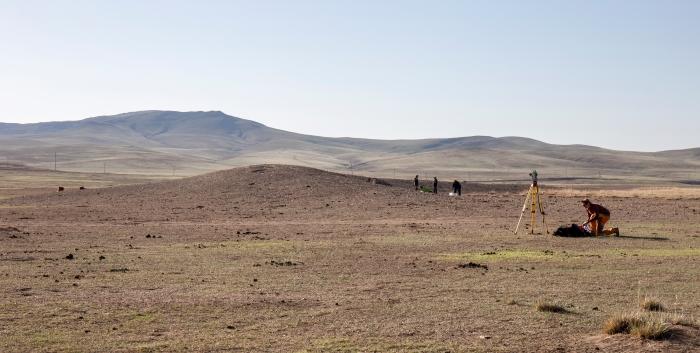
Fig. 12. Baruun Khüree monastery: Hans Whitefield preparing survey equipment in front of excavation trench at one of the four middens of the monastery in the background, May 2022 (photo: Sara Jagiolla, CAU Kiel).
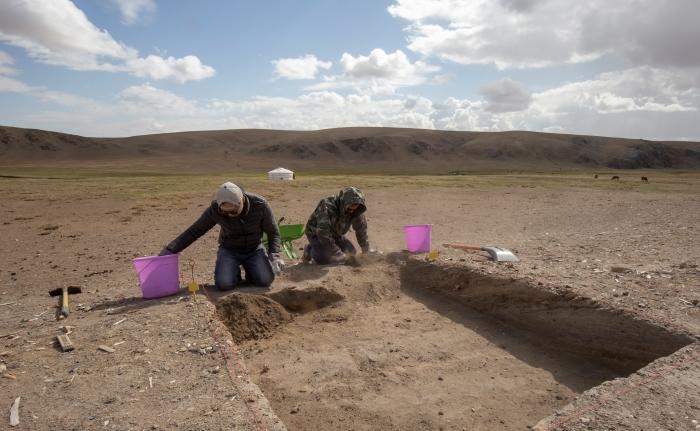
Fig. 13. Baruun Khüree monastery: Start of the excavation of a trench in the northeastern midden of the monastic compound (location: see Fig. 26), May 2022 (photo: Sara Jagiolla, CAU Kiel).
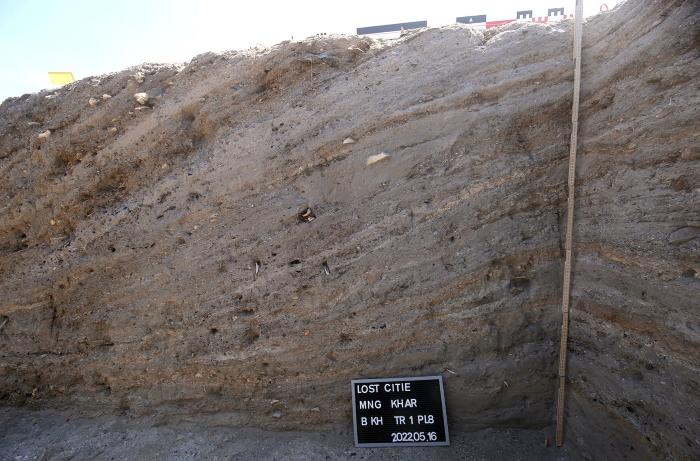
Fig. 14. Baruun Khüree monastery: Profile of the excavation trench through the northeastern midden showing a multitude of rubbish layers of ash, bones and artefacts (photo: Jonathan Ethier).
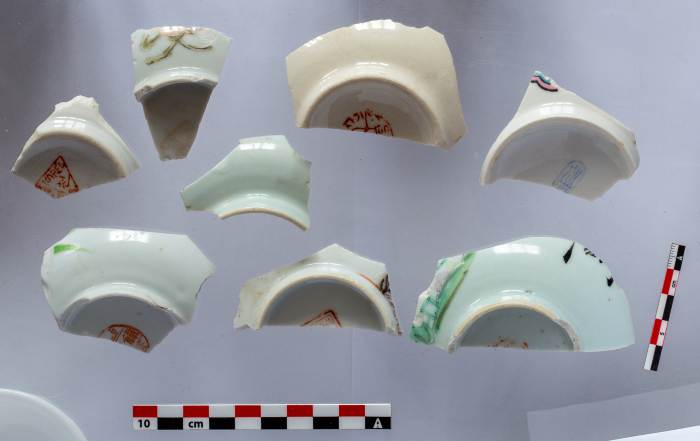
Fig. 15. Baruun Khüree monastery: Fragments of Chinese and Korean ceramics from surface collection of middens surrounding the monastic compound (photo: Enkhtuul Chadraabal).
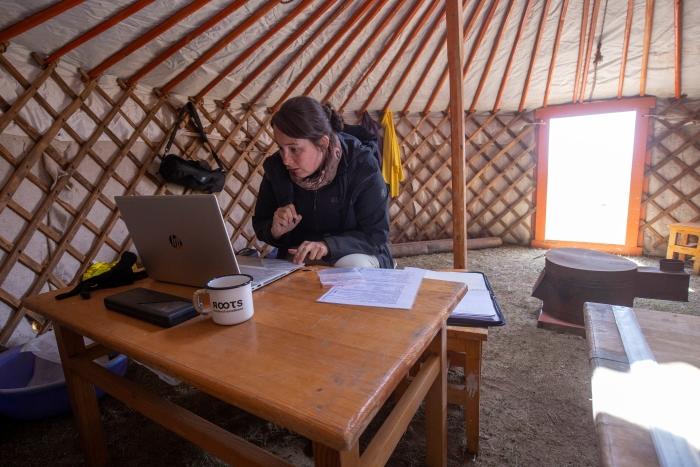
Fig. 16. Baruun Khüree monastery: Archaeozoologist Lea Kohlhage documenting animal bones from the excavation trench, May 2022 (photo: Sara Jagiolla, CAU Kiel).
Further work and future perspectives
Our project has adding substantial new insights on the investigated sites and the wider research field of Manchu period urbanism and its subsequent perception. These results will be presented and discussed in further publications, adding to the papers already published. As the former project PI at Kiel University, Henny Piezonka, has moved to her current position at the Institute for Prehistoric Archaeology at Freie Universität Berlin, the work is now coordinated from here. Further potential topics both for new investigations and for scientific analysis and publication concern Buddhist cities, urbanization in the steppe, and investigations on Manchu material culture as well as diachronous research on nomadic urbanism. These perspectives are discussed, followed up and developed in dialogue with other German, Mongolian and international scholars and research groups.
Publications:
- Piezonka, H., Ethier, J., Ahrens, B., Chadraabal, E., Oczipka, M., Ressel, C., Sampildondov, C., 2023. Lost cities in the Steppe: Investigating an enigmatic site type in early modern Mongolia. Antiquity 97, No. 392 E12. DOI:10.15184/aqy.2023.8
- Ethier, J., Ressel, C., Ahrens, B., Chadraabal, E., Chuluun, S., Oczipka, M., Piezonka, H., 2023. Verlassene Städte der Steppe – Zu Geschichte, Rollen und Wahrnehmung frühneuzeitlicher urbaner Orte in der Mongolei. In: Zimmermann, M. (ed.), Lost Cities – Wahrnehmung von und Leben mit verlassenen Städten in den Kulturen der Welt. Berlin: De Gruyter. 157-182.
- Ethier, J., Ressel, C., Ahrens, B., Chadraabal, E., Chuluun, S., Oczipka, M., Piezonka, H., 2022. Nodes of Connectivity: The Role of Religion in the Constitution of Urban Sites in Nomadic Inner Asia. In: J. Müller (ed.), Connectivity matters! Social, Environmental and Cultural Connectivity in Past Societies. ROOTS Studies, vol. 2. (Leiden: Sidestone) 35–70.
- Ressel C., Ahrens B., Chadraabal E., Chuluun S., Ethier J., Oczipka M., Piezonka H., 2020. Auf den Spuren verlassener Städte: Urbane Strukturen aus der Zeit mandschurischer Herrschaft und deren Weiterwirken in der heutigen Mongolei. Ein Vorbericht. Mongolische Notizen 27, 56–73.
- Chuluun S., Chadraabal E., Piezonka H., Oczipka M., Ethier J., 2019. Archaeological excavation results of the year 2019 of the Mongolian-German cooperation project „Lost Cities in the Steppe“ [Тал нутгийн нүүдэлчдийн oрхигдсон хотууд” төслийн 2019 оны хээрийн судалгааны ажлын товч дүнгээс]. Mongolyn Arkheologi, 127–130.
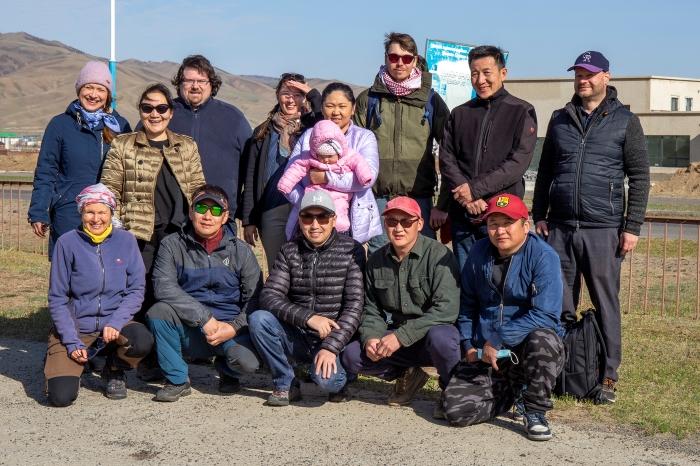
Fig. 17. The expedition team in Kharkhorin, May 2022 (photo: Sara Jagiolla, CAU Kiel)

